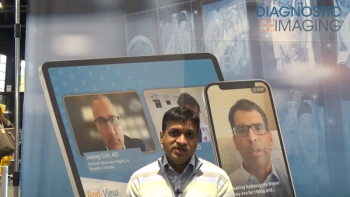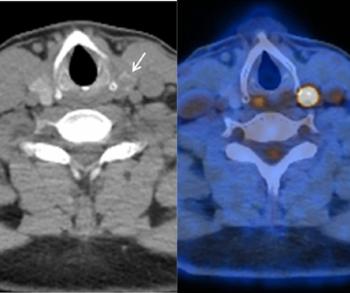
Siemens redesigns R/F system for user, patient comfort
Siemens’ new Axiom Luminos TF is notable not only for the enhancements it brings to a table fluoroscopy system but for the approach the company employed. The design of the system, which will be introduced at the RSNA meeting, incorporates ideas generated by Siemens luminaries who were an integral part of the engineering team.
Siemens' new Axiom Luminos TF is notable not only for the enhancements it brings to a table fluoroscopy system but for the approach the company employed. The design of the system, which will be introduced at the RSNA meeting, incorporates ideas generated by Siemens luminaries who were an integral part of the engineering team.
Based on customer recommendations, the Axiom Luminos TF, a redesign of the Axiom Sireskop SD, is more user-friendly. The tableside fluoroscopy system accommodates the growing population of obese patients.
The company sought more substantial input by taking customer feedback beyond conventional approaches such as user surveys, according to Maurice Barton, product manager of fluoroscopy systems for Siemens' Angiography and X-ray Division.
"We wanted to make the customers part of the engineering team, at least in the early stage of design," Barton said.
Siemens engineers from Germany visited U.S. customers at 13 medical facilities, observing how customers used equipment. Face-to-face interaction provided insights about improvements customers wanted to see in a next-generation system.
"The engineers took the suggestions back to Germany, where all of our products are designed and made. That is how the modifications came about," he said.
Customers' top priority was an increased weight capacity, due to the rising number of bariatric procedures and the obesity epidemic besetting the U.S. population.
"This epidemic is an unfortunate turn of events," Barton said. "The only option for product vendors is to design stronger tables to support the larger patients. Otherwise, some patients can't be scanned."
Siemens increased the weight limit on the Luminos to 600 pounds. The system, which also features a wide table, can support up to 600 pounds in the locked horizontal position and 500 pounds with table movement.
The company also increased the gap between table and image intensifier by 5 cm to 55 cm. This expansion enables large patients to fit more comfortably in the system. The increased space also makes it easier to perform applications such as swallow studies, where patients in wheelchairs are imaged in an upright position.
Customers' other main considerations addressed user comfort. Ergonomic handles are positioned in the front of the system to improve ease-of-use and flexibility.
"As users engage the controls in the front, the two new handgrips enable them to manipulate the spot film device up and down the patient, instead of having to reach to the side," Barton said.
The company also configured the most commonly used operation controls at the tableside, between the handgrips.
"Anything users need to operate the table is right at the patient's side," he said.
The Luminos TF provides performance standards common to other Axiom products, including enhanced workflow and efficiency, optimal image quality, and reduced radiation dose. The system features an intuitive user interface that allows physicians to complete more exams in less time.
It also includes a mobile flat detector option that helps improve workflow by eliminating the use of film or computed radiography cassettes. With flat detectors, all images can be automatically stored in one patient folder, eliminating the need to manually merge images on the PACS workstation.
Newsletter
Stay at the forefront of radiology with the Diagnostic Imaging newsletter, delivering the latest news, clinical insights, and imaging advancements for today’s radiologists.



























